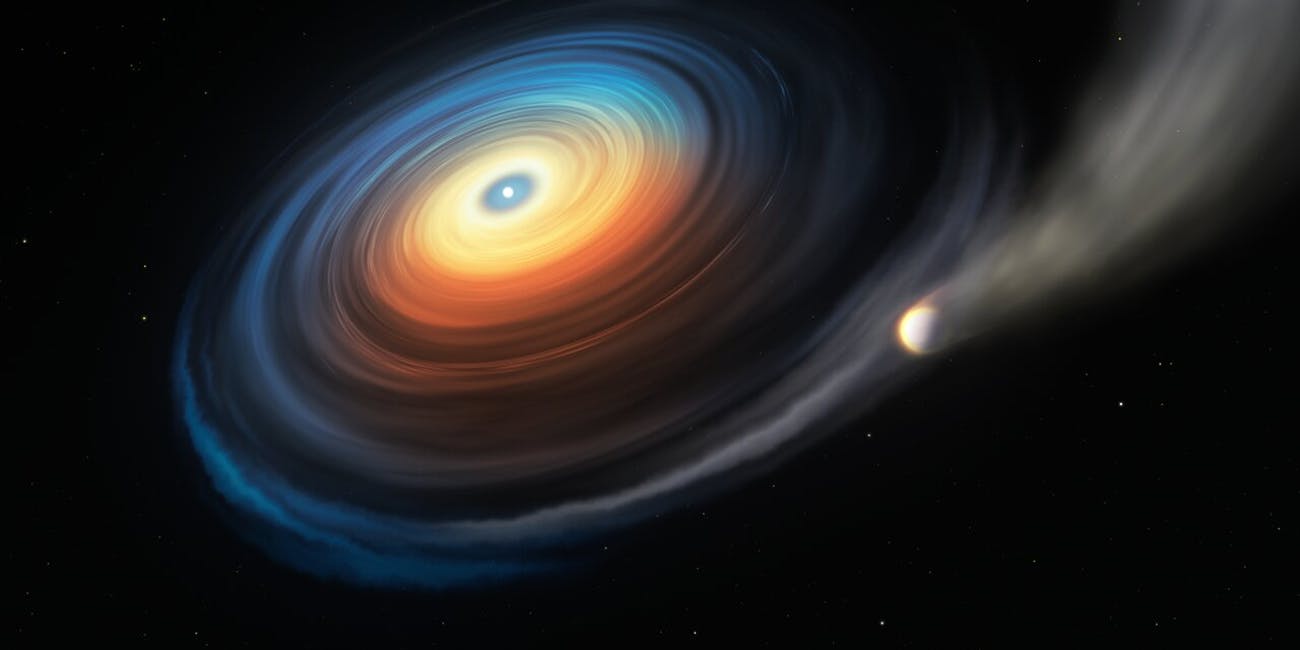Science & Technology
White Dwarfs System
- 07 Dec 2019
- 4 min read
Why in News
- For the first time ever, astronomers have found an indirect evidence of a giant planet orbiting a white dwarf star (WDJ0914+1914). The system was found in the Cancer constellation.
- The planet was not seen directly but evidence of its presence was in the form of a disc of gas (hydrogen, oxygen and sulphur) formed due to its evaporating atmosphere.
- Spikes of gas were detected by the Very Large Telescope of the European Southern Observatory in Chile.
Significance
- This is the first evidence of an actual planet revolving around a white dwarf star. Prior to this discovery, only smaller objects such as asteroids had been detected.
- WDJ0914+1914 is providing us with a glimpse into the very distant future of our own solar system. In about 4.5 billion years from now, the Sun will become a white dwarf evaporating all the planets.
White Dwarfs
- Stars like our sun fuse hydrogen in their cores into helium through nuclear fusion reactions. White dwarfs are stars that have burned up all of the hydrogen they once used as nuclear fuel. Such stars have very high density.
- Fusion in a star's core produces heat and outward pressure (they bloat up as enormous red giants), but this pressure is kept in balance by the inward push of gravity generated by a star's mass.
- When the hydrogen, used as fuel, vanishes and fusion slows, gravity causes the star to collapse in on itself into white dwarfs.
- Black Dwarf: Eventually—over tens or even hundreds of billions of years—a white dwarf cools until it becomes a black dwarf, which emits no energy. Because the universe's oldest stars are only 10 billion to 20 billion years old there are no known black dwarfs
- It must be noted that not all white dwarfs cool and transform into black dwarfs. Those white dwarfs which have enough mass reach a level called the Chandrasekhar Limit. At this point the pressure at its center becomes so great that the star will detonate in a thermonuclear supernova.
Chandrasekhar Limit
- Chandrasekhar Limit is the maximum mass theoretically possible for a stable white dwarf star. A limit which mandates that no white dwarf (a collapsed, degenerate star) can be more massive than about 1.4 times the mass of the Sun. Any degenerate object more massive must inevitably collapse into a neutron star or black hole.
- The limit is named after the Nobel laureate Subrahmanyan Chandrasekhar, who first proposed the idea in 1931. He was awarded the Nobel Prize in Physics in 1983 for his work on the physical processes involved in the structure and evolution of stars.





